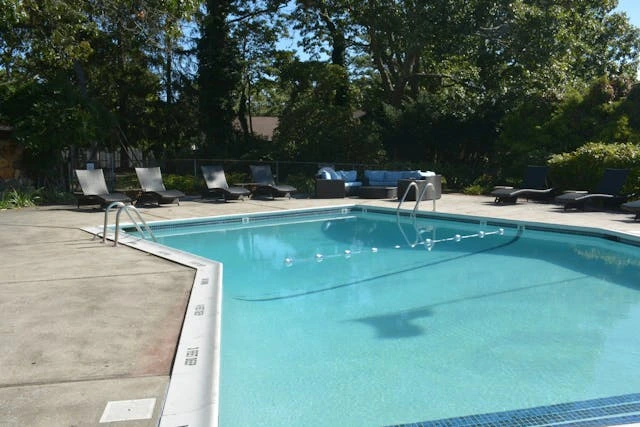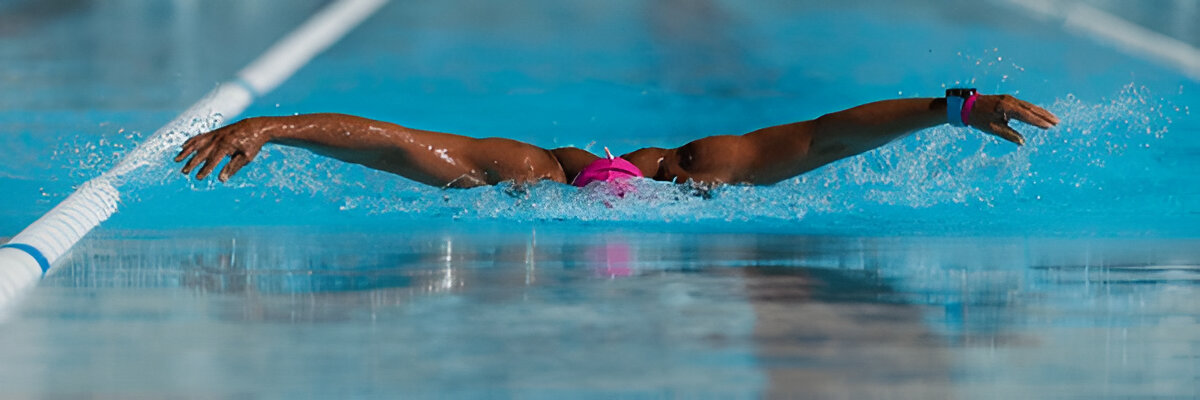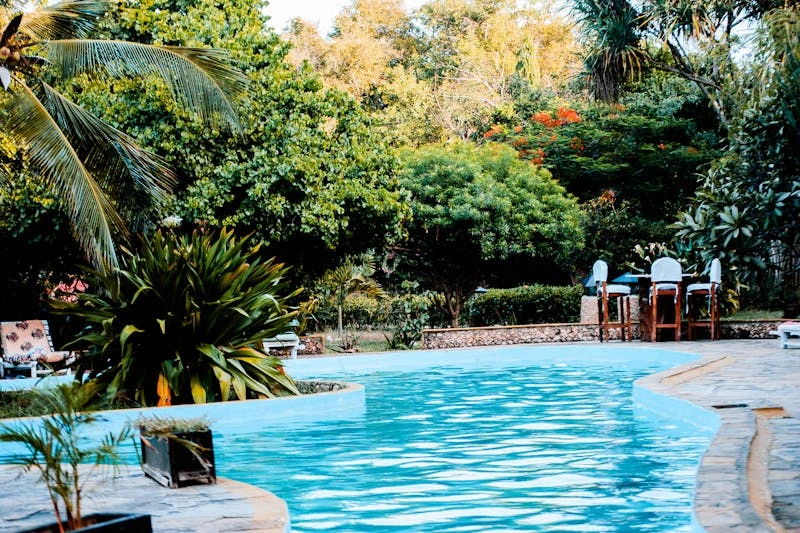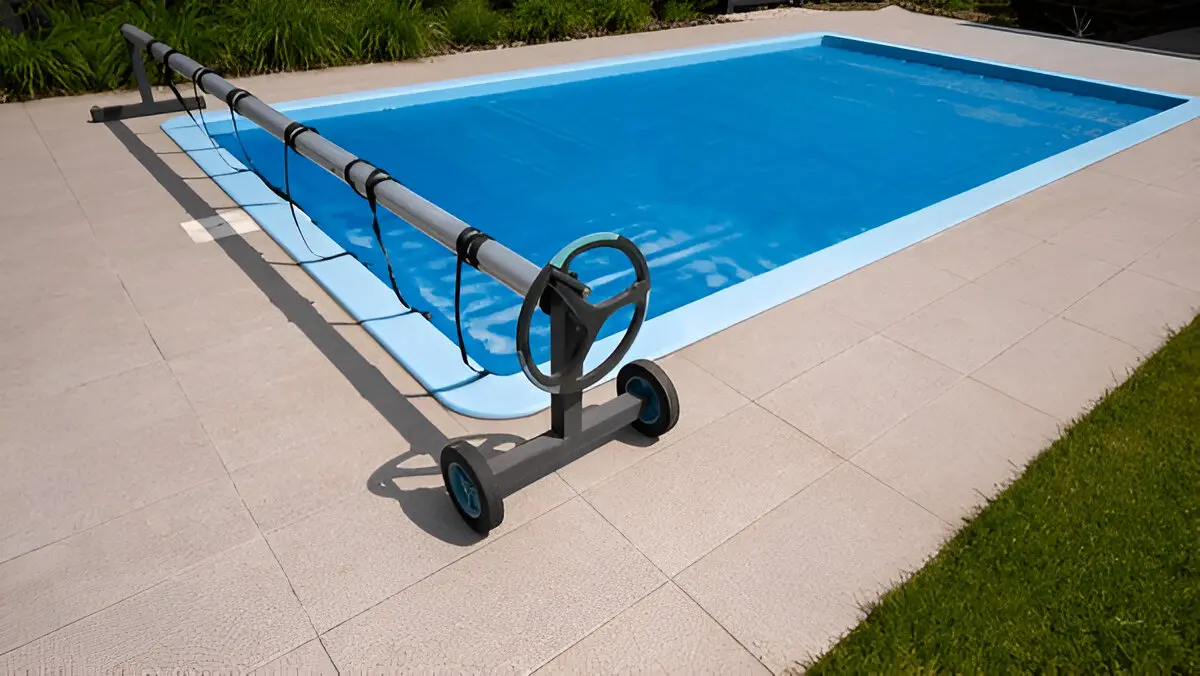Month: June 2025
Winter Pool Maintenance Tips for Aussie Pool Owners

Australia’s swimming season may slow down in winter, but your pool still needs attention. Neglecting care during the colder months can result in algae growth, damaged equipment, and expensive cleaning work when summer returns. Whether you have a backyard plunge pool or a full-size lap pool, understanding how to care for it through winter is essential for its longevity and cleanliness.
This guide walks through key steps to manage your pool during winter in Australia, ensuring it’s ready for action when the warmer days return.
Why Off-Season Pool Care Matters?
Even when unused, a pool remains exposed to environmental elements like dust, rain, and falling leaves. Without regular upkeep, water chemistry becomes unbalanced, surfaces accumulate grime, and equipment may deteriorate.
Taking preventive measures during winter can:
1. Minimise costly repairs
2. Extend pool equipment life
3. Reduce summer prep time
4. Keep water in better condition
Prepare Early: The Best Time to Start
The best time to begin your winter preparation is in late autumn, before temperatures drop too low. This ensures you can complete all necessary checks and adjustments in mild weather, making the process easier and more efficient.
Step-by-Step Guide to Winter Pool Preparation
1. Balance the Water Chemistry
Before the season changes, check pH, alkalinity, and calcium hardness levels. Keeping water balanced protects your pool’s surface and prevents scale buildup or corrosion.
Recommended levels:
A) pH: 7.2 – 7.6
B) Alkalinity: 80 – 120 ppm
C) Calcium Hardness: 200 – 275 ppm
Add winter algaecide and shock treatment if necessary, particularly if the pool isn’t covered year-round.
2. Deep Clean the Pool
Use a leaf net or skimmer to remove floating debris. Vacuum the base to pick up dirt and brush the walls to prevent algae. This reduces contaminants and ensures better chemical efficiency.
Also, clean the skimmer basket and pool filter. A thorough clean before shutdown will save hours of work post-winter.
Covering Your Pool for the Cold Months
Installing a pool cover is one of the simplest ways to protect your water and surface during winter. In Australia, where debris can accumulate due to frequent storms or strong winds, a durable cover helps reduce maintenance time and chemical use.
Types of Pool Covers:
A) Solid covers: Best for keeping out sunlight and debris
B) Mesh covers: Allow drainage but may let some dirt through
C) Automatic covers: Convenient but more expensive
Make sure the cover fits tightly, without gaps that allow leaves, bugs, or rainwater to enter.
Winter Pool Pump and Filter Maintenance
If you’re choosing to keep your system running on a reduced schedule during winter, set the pump to run for 2–4 hours daily. This ensures water circulation and prevents stagnation.
For those opting to shut the pool down entirely, clean and dry the filter and pump, and consider professional help to prevent internal freeze damage—even though Australian winters rarely freeze water solid, regions like Canberra or elevated areas can be at slight risk.
Should You Close the Pool Completely?
Some Australian pool owners prefer to “winterize” by fully closing the pool. Others keep it running on minimal operation. Both options are valid; the choice depends on location, pool usage, and weather.
Closing Down the Pool:
1. Backwash the filter
2. Lower water level below the skimmer
3. Add appropriate chemicals (shock, algaecide, scale preventer)
4. Disconnect and store equipment
5. Cover the pool tightly
Partial operation, on the other hand, requires weekly or fortnightly checks but allows easier reopening in spring.
Handling Pool Cleaning After Winter
When spring arrives, it’s tempting to jump in right away—but cleaning is necessary first.
Here’s how to clean the pool after winter:
1. Remove the cover and rinse it before storing
2. Skim, vacuum, and brush the pool thoroughly
3. Reconnect equipment if disconnected
4. Test water chemistry and adjust accordingly
5. Run the pump for at least 24–48 hours before swimming
If water clarity is poor, use a flocculant or clarifier to gather fine particles for easier removal.
Simple Tips for Effortless Pool Care
Keeping your pool healthy during winter doesn’t require daily checks.
Follow these easy pool maintenance habits:
1. Inspect the cover regularly for rips or water pooling
2. Check chlorine levels fortnightly if the system is running
3. Remove any floating debris before it settles
4. Keep the pump timer consistent
These small efforts can make a big difference in how your pool performs once warm weather returns.
Mistakes to Avoid During the Off-Season
Even experienced pool owners sometimes make winter care mistakes.
Avoid these common errors:
1. Skipping the chemical check before covering
2. Leaving the pump off for months without proper shutdown
3. Using the wrong type of cover or not securing it
4. Neglecting filter cleaning
5. Failing to lower water level if closing the pool completely
Being aware of these issues can save money and time down the line.
Regional Considerations for Australian Pool Owners
Australia’s varied climate means that pool maintenance in winter differs by location.
Here’s a quick overview:
1. Tropical Regions (e.g., QLD): Pools may still be used occasionally, so low-level regular care is preferred over full closure.
2. Temperate Zones (e.g., NSW, VIC): Consider partial shutdown with a good cover and weekly checks.
3. Cooler Areas (e.g., TAS, ACT): Full winterizing may be ideal due to low temperatures.
While winter in Australia doesn’t always bring snow or ice, it still impacts your backyard pool. A few proactive steps can help keep your system healthy, your water clean, and your summer swim season stress-free. Regular monitoring, proper covering, and balanced chemistry are the keys to success.
Whether you’re shutting things down for the season or maintaining a light routine, good winter care ensures your pool remains an asset, not a hassle.
Need Help with Winter Pool Preparation?
Consult a local professional or your pool product supplier to choose the right winterization chemicals, covers, and an automatic pool cleaner that can assist with light off-season maintenance. A little effort now means a crystal-clear pool waiting for you next season.
Lose Weight by Swimming: A Safe Start for the Overweight

Struggles of Heavyweight Individuals

Before diving into swimming and its weight loss benefits, let’s first understand what people with heavy weight really go through—physically, emotionally, and mentally.
Carrying extra weight isn’t just about a number on the weighing scale. It affects everyday life in many ways:
Joint Pain and Limited Mobility: For people with excess weight, simple movements like climbing stairs, walking long distances, or even standing for extended periods can cause severe discomfort due to joint pressure—especially on the knees, ankles, and hips.
Low Energy Levels: Overweight individuals often feel tired quickly. The body requires more energy to perform the same tasks as someone with a healthier weight range, leading to fatigue and a lack of motivation to move more.
Embarrassment and Social Anxiety: Many face emotional challenges—feeling uncomfortable going to the gym, wearing tight workout clothes, or being judged for how they look when exercising in public spaces.
Fear of Injury: High-impact exercises like running, aerobics, or intense weightlifting can cause more harm than good for someone who is just starting out. The risk of injury is significantly higher, making most traditional fitness routes feel unsafe.
This combination of physical stress and emotional pressure leads to a frustrating loop: you want to get fit, but your body and mind resist the usual paths.
That’s where swimming enters as a silent hero—low-impact, stress-free, and extremely effective.
Why Swimming is Perfect for Losing Weight?

Swimming is often overlooked as a weight loss activity, but it’s one of the most powerful and gentle forms of full-body exercise available.
Here’s why swimming for losing weight works exceptionally well for people struggling with obesity or overweight issues:
1. Water Supports Your Weight, Reducing Impact
The moment you enter the pool, your body feels lighter—literally. Water supports up to 90% of your body weight. That means if you weigh 100 kg, the pressure on your joints is reduced to just 10 kg in water. For heavy individuals, this means they can move freely without putting stress on their knees or back.
2. Full-Body Workout Without Overheating
Swimming engages your core, arms, legs, and back—without making you feel sweaty or hot. Since water cools your body, you can exercise for longer durations without feeling drained. For people with more weight, this is a huge bonus.
3. Builds Muscle While Burning Fat
Unlike walking or cycling, swimming naturally offers resistance from water. Every stroke you take is like doing strength training. More muscle = better metabolism. And a higher metabolism means more calories burned even when you’re at rest.
4. Swimming Helps Burn Significant Calories
While calorie burn varies by intensity, even light swimming can burn 400–500 calories in an hour. More vigorous styles like butterfly or freestyle laps can go up to 700–800 calories/hour. Over time, this leads to noticeable weight loss and body transformation through swimming.
5. Improves Lung Capacity and Heart Health
Swimming involves rhythmic breathing and cardiovascular movement, helping improve heart and lung efficiency—both vital for overall weight loss and long-term stamina.
Does Swimming Help You Lose Weight?
Yes, but with realistic expectations.
Many ask: “Can swimming help lose weight like running or HIIT?” The answer is yes—but the progress is steady and safer, especially for someone starting out from a heavy weight.
Unlike crash diets or intense gym workouts, swimming builds habits you can stick to without injuring your body or burning out your motivation.
Here’s how swimming works when used smartly for weight loss:
Swimming Pool Workouts for Effective Weight Loss
You don’t need to be an expert swimmer to begin. In fact, basic swimming techniques combined with consistency will give better results than complex routines that burn you out.
Let’s break down beginner to advanced pool workouts designed to support weight loss in overweight individuals:
Beginner Pool Routine (0–4 Weeks)
For those just starting and not confident in swimming
1. Water Walking (20 minutes): Walk from one side of the pool to another in waist- or chest-deep water. This builds leg strength and burns calories without straining joints.
2. Leg Lifts at Poolside (3 sets of 10 reps): Strengthens your core and thighs.
3. Flutter Kicks Holding Edge (3 sets of 30 seconds): Great cardio and leg toner.
Do this 3-4 times a week to build water confidence and stamina.
Intermediate Pool Routine (1–3 Months)
Once you’re comfortable with water movements
1. Freestyle Swim (5–10 laps): Try slow, long strokes. Focus on rhythm, not speed.
2. Breaststroke (5–10 laps): This is a great fat-burning stroke with low exhaustion.
3. Treading Water (1–2 minutes): Mimics cardio while building strength.
This 30–40 minute session, 4 times a week, can show visible weight and inch loss.
Advanced Pool Workout (After 3 Months)
When your stamina is better and you want to challenge yourself:
1. Interval Swimming (30 minutes): Alternate 1 lap fast, 1 lap slow.
2. Butterfly/Backstroke (as per stamina): Burns maximum calories and engages full body.
3. Underwater Lunges or Squats (3 sets): Builds leg power while still low-impact.
Swimming Body Transformation – What to Expect Over Time
Consistency and diet go hand in hand with swimming.
In 3–6 months of regular swimming, most people report:
1. Reduced body fat
2. Better muscle tone
3. Higher flexibility and posture correction
4. Better sleep and energy levels
5. Visible weight loss (5–15 kg depending on body type and routine)
For overweight individuals, this transformation often comes with renewed confidence, less dependence on medications, and a more active lifestyle.
Can Swimming Help Lose Weight Without Dieting?
Short answer: Not significantly.
Swimming burns calories, yes. But if your diet continues to overload you with unhealthy fats and sugars, your efforts in the pool will just balance out—not reduce.
That’s why pairing swimming with a nutritious, portion-controlled diet gives the best results. Start by:
1. Reducing junk and processed food
2. Eating more fiber (vegetables, oats, lentils)
3. Staying hydrated
4. Avoiding sugary sodas and juices
Swimming sets the stage for your weight loss journey—your food choices carry it forward.
Tips for Staying Consistent with Swimming for Losing Weight
1. Find a Community Pool or Class: Being around others can keep you motivated and less self-conscious.
2. Track Your Progress Weekly: Not just weight, but also inches, stamina, and energy levels.
3. Reward Yourself (Non-Food Rewards): New swimwear, spa time, or a new playlist.
4. Stay Hydrated: Even though you’re in water, your body still sweats. Drink water before and after your swim.
5. Mix It Up: Add fun elements—water Zumba, aqua yoga, or family swim time.
Final Thoughts
If you’ve been avoiding fitness due to fear of pain, judgment, or injury—swimming opens a gentle, non-intimidating door to health. It doesn’t scream “workout,” but silently sculpts your body, strengthens your heart, and refreshes your mind.
Whether you’re walking laps in the shallow end or mastering freestyle strokes, every splash counts.
So, yes—swimming helps lose weight. But more importantly, it helps people regain their belief that they can.
Ready to focus on your health while enjoying more free time? Let robotic pool cleaner handle the hard work of cleaning your pool. Spend less time scrubbing and more time swimming your way to weight loss. Your fitness journey starts with a clean, hassle-free pool!
Frequently Asked Questions
How many times a week should I swim to lose weight?
Ideally, 3 to 5 times a week for 30–45 minutes per session is a good starting point.
Do I need to know all strokes for weight loss?
No. Even water walking, flutter kicks, or breaststroke can be effective.
Is swimming better than walking for heavy individuals?
Yes, because water reduces joint strain, making it safer and more efficient for overweight beginners.
Can I lose belly fat by swimming?
Yes, swimming engages the core. Paired with the right diet, it can help reduce belly fat over time.
When will I start seeing results from swimming?
With consistency and diet control, noticeable changes appear in 4–6 weeks, and bigger transformations in 3–6 months.
Best Plants And Trees for Around Swimming Pools

A beautiful swimming pool becomes even more inviting when surrounded by lush greenery. Whether you’re aiming for a tropical paradise or a neat, low-maintenance landscape, choosing the right plants to plant around a swimming pool is essential. These selections not only enhance aesthetics but also help with privacy, cooling, and even reducing pool debris.
Let’s explore the best good plants and pool-friendly trees to transform your pool area into a refreshing, vibrant oasis.
Why Landscaping Matters Around Pools?
Before diving into the plant list, it’s important to understand why landscaping plays a key role in pool design:
1. Privacy & Shade: Strategic planting can provide natural shade and seclusion from neighbors.
2. Cooling Effect: Trees and shrubs help cool the surrounding air, making your poolside more comfortable.
3. Aesthetic Appeal: The right combination of foliage adds character and luxury to any backyard.
4. Functional Boundaries: Plants act as natural borders, guiding foot traffic and defining areas.
However, not every shrub, tree, or flower is suitable. Some plants shed too many leaves, attract insects, or have aggressive roots that can damage pool structures.
Best Shrubs and Flowers for Pool Surroundings
1. Bird of Paradise
If you’re after a bold, tropical statement, the Bird of Paradise is an ideal choice. Its unique orange and blue blooms mimic an exotic bird in flight, and its large green leaves offer a strong visual impact without shedding excessively.
A) Maintenance: Low
B) Water Needs: Moderate
C) Bonus: Doesn’t drop many leaves, making pool cleaning easier.
2. Liriope (Lilyturf)
For borders and edging near the pool deck, Liriope is a favorite. This grass-like perennial provides a neat, tidy look and comes with small purple or white flowers in late summer.
A) Ideal For: Low-maintenance ground cover.
B) Why It Works: No invasive roots, minimal leaf litter.
3. Agave
For a modern, sculptural feel, Agave brings bold structure with low water needs. Its sharp, clean lines and resistance to harsh sunlight make it perfect for poolside settings.
A) Caution: Choose spineless varieties if kids frequently use the pool area.
B) Looks Best With: Desert-style or minimalist landscaping.
Ideal Grasses and Ground Covers
4. Fountain Grass
Soft, wispy, and non-invasive, Fountain Grass adds movement and texture to your pool surroundings. The plant’s feathery plumes and arching stems work beautifully against stone or tiled pool edges.
A) Pros: Drought-tolerant, low leaf drop.
B) Use It For: Softening hardscape edges.
5. Blue Fescue
Compact and clumping, Blue Fescue brings a pop of color with its icy blue foliage. It’s a great fit for modern gardens and doesn’t mind full sun.
A) Perfect For: Filling gaps between pavers or along the pool fence.
B) Bonus: Deer-resistant and non-toxic.
Top Pool-Friendly Trees for Shade and Style
6. Frangipani (Plumeria)
Known for its fragrant flowers and tropical look, Frangipani is one of the most beloved plants for swimming pool areas in warm climates. It thrives in full sun and offers just the right amount of shade.
A) Leaves: Moderate drop in colder months.
B) Roots: Non-invasive, making it safe for decking and tiles.
7. Japanese Maple (in cooler regions)
In temperate zones, Japanese Maple adds elegance with its finely cut leaves and vibrant seasonal color changes. Although deciduous, its leaf drop is minimal and manageable.
A) Best Feature: Can be pruned to suit smaller spaces.
B) Pool Style: Ideal for Zen or formal garden themes.
8. Olive Tree (Non-Fruiting Variety)
The Olive Tree, especially sterile cultivars that don’t produce messy fruits, is a classy, drought-resistant option. Its silver-green foliage looks striking against blue pool water.
A) Why It’s Great: Minimal leaf drop, elegant profile.
B) Needs: Well-drained soil and full sun.
Tropical and Evergreen Beauties
9. Hibiscus
For lush blooms and a vibrant touch, Hibiscus is a classic choice in many tropical pool settings. These shrubs offer large, colorful flowers from spring to fall.
A) Keep in Mind: Regular pruning helps maintain shape and reduce debris.
B) Tip: Choose hardy varieties that resist disease.
10. Bamboo (Clumping Type Only)
Bamboo is an excellent privacy screen and windbreak when planted around pools. Opt for clumping species like Bambusa textilis to avoid invasive roots.
A) Height Advantage: Grows tall quickly for instant coverage.
B) Maintenance: Occasional thinning.
Important Considerations When Choosing Pool Plants
While picking plants around pools, keep the following factors in mind:
1. Root Behavior: Avoid trees with aggressive root systems like Ficus or Willow that may crack pool decks or underground plumbing.
2. Debris and Leaf Drop: Plants like Jacaranda or Pine Trees are notorious for constant littering. Instead, choose evergreens or slow-shedding species.
3. Sun Exposure: Select species based on the sun/shade pattern in your backyard. Full-sun lovers may suffer in shaded corners, and vice versa.
4. Pest Resistance: Opt for varieties that don’t attract bees, wasps, or mosquitoes—essential for a safe and relaxing pool experience.
Bonus Tips for Pool Landscaping Success
1. Mulch Smartly: Use stone or gravel mulch near the pool. Organic mulch can blow into the water.
2. Create Zones: Separate poolside relaxation areas with hedges or potted greenery.
3. Consider Pot Plants: Use planters for flexible styling and easy maintenance.
4. Use Drip Irrigation: Prevents overspray into the pool while keeping roots hydrated.
Selecting the right plants for around pools is about finding a balance between beauty, safety, and practicality. The best choices enhance your outdoor environment while making sure your maintenance remains hassle-free. Whether you’re after lush tropical vibes, Mediterranean minimalism, or serene Zen calmness, there’s a perfect plant for your poolside.
With the right choices and a bit of planning, your swimming pool area can be a year-round retreat surrounded by nature’s finest accents.
Transform your pool care routine with a robotic pool cleaner – powerful, efficient, and perfect for keeping your pool spotless all year round. Don’t wait! Make your backyard shine and grab yours today at an unbeatable price!
Step-by-Step Guide to Covering Your Pool – PoolBot

Swimming pools are a great source of relaxation and fun, especially during warmer months. But when the season ends or you simply want to keep your pool clean and protected, covering your pool becomes essential. In this blog, we’ll take you through a step-by-step guide to covering your pool, so you can maintain it properly and avoid common issues like debris buildup, algae growth, or damage.
Whether you’re preparing for winter, heading out of town, or simply giving your pool a break, learning how to cover a swimming pool the right way is important. With the right tools and techniques, it doesn’t have to be complicated.
Why You Should Cover Your Pool?
Before diving into the steps, let’s understand why covering your pool matters:
1. Keeps out leaves, dirt, and insects
2. Prevents algae growth by reducing sunlight exposure
3. Saves water by reducing evaporation
4. Improves safety, especially for children and pets
5. Reduces the need for frequent cleaning and chemical use
Now, let’s go over the actual process of covering your swimming pool safely and effectively.
Step 1: Clean the Pool Thoroughly
Before placing the cover, it’s essential to clean the pool. Remove all debris such as leaves, twigs, and dirt using a pool net. Scrub the sides and bottom to remove any algae or buildup.
If you have access to pool vacuum cleaners, now is the perfect time to use them. They do an excellent job of cleaning hard-to-reach areas and ensure your pool stays spotless underneath the cover.
Why this matters: Any debris left in the water can cause stains, promote algae growth, or even damage your pool lining over time.
Step 2: Balance the Water Chemistry
Even when your pool is not in use, the water chemistry should be balanced to avoid damage to your pool surfaces and equipment.
Check and adjust the following:
1. pH level (ideal: 7.2–7.6)
2. Chlorine level (ideal: 1–3 ppm)
3. Alkalinity (ideal: 80–120 ppm)
4. Calcium hardness (ideal: 200–400 ppm)
Use a pool testing kit or strips to check these levels. Once they’re balanced, run your pump for a few hours to circulate the water.
Step 3: Lower the Water Level (Optional)
Depending on your pool type and the climate in your area, you may need to lower the water level slightly. This is especially important for winterizing in cold regions to prevent water from freezing and expanding.
For in-ground pools: Lower the water below the skimmer or return jets.
For above-ground pools: Reduce the level by a few inches, but don’t go below the bottom of the skimmer.
Always check the manufacturer’s recommendations for your specific pool cover and region.
Step 4: Remove Pool Accessories
Take out any pool accessories before covering:
1. Ladders
2. Diving boards
3. Pool toys
4. Floats or skimmers
Clean and store them in a dry place. This prevents wear and tear and also ensures your cover fits properly.
Step 5: Choose the Right Pool Cover
Not all covers are created equal. The type of cover you choose depends on your needs:
1. Winter covers: Ideal for long-term use and cold climates
2. Safety covers: Offer protection against accidents and are great for households with kids or pets
3. Solar covers: Help retain heat and are best for short-term use
4. Automatic covers: Convenient and easy to use, but more expensive
When learning how to cover a swimming pool, selecting the right cover is key to your success.
Step 6: Lay the Cover Over the Pool
Once the pool is clean and ready, it’s time to lay the cover over the pool:
1. Unfold the cover and align it with your pool’s shape.
2. Start from one end and slowly spread it out across the pool.
3. Smooth out any wrinkles and ensure it lies flat.
Make sure the cover extends evenly over all sides.
Step 7: Secure the Cover Properly
To cover a swimming pool safely, securing the cover is the most important part. Use the appropriate method based on your pool type:
1. In-ground pools: Use water bags, cover clips, or a deck anchoring system.
2. Above-ground pools: Use a cable and winch system or cover clips to tighten and hold the cover in place.
Check that it’s snug and there are no open edges where wind can lift the cover.
Step 8: Use a Cover Pump or Drain Holes
Pool covers can collect rainwater, snow, or debris over time. This not only weighs the cover down but also risks tearing it.
Use a pool cover pump or choose a cover with built-in drain holes to remove excess water. Make a habit of checking and draining your cover regularly.
Step 9: Regular Maintenance and Inspection
Even after covering, your pool needs occasional attention:
1. Check the cover every few weeks for debris or damage.
2. Clear off leaves and water promptly.
3. Inspect fasteners and weights to ensure everything is secure.
Following these easy tips for covering your swimming pool will help you extend the life of both your pool and its cover.
Knowing how to cover a swimming pool correctly is more than just pulling a tarp over the water. It involves careful cleaning, preparation, choosing the right cover, and securing it properly. By following the steps above, you not only protect your investment but also make pool opening next season a breeze.
And remember — a well-covered pool stays cleaner, uses fewer chemicals, and is safer for everyone around. It’s a simple task with big benefits.
If you’re also tired of manually cleaning your pool before covering it, consider investing in pool vacuum cleaners for quicker and more effective maintenance.

